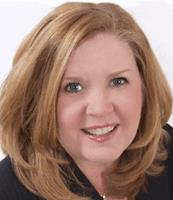Waldorf Departure Drama For DCAT?

By Louis Garguilo, Chief Editor, Outsourced Pharma

I didn’t quite buy into the DCAT announcement regarding its departure from the Waldorf Astoria, the long-time central location for DCAT Week in New York City each spring.
Call me cynical—a degree in public relations can do that – but I just couldn’t believe “checking out” of the Waldorf would be as easy as it sounded.
I took this cynicism directly to Margaret Timony, Executive Director of DCAT (officially, the Drug, Chemical & Associated Technologies Association).
“Sorry, Louis” said Timony, in her office across the river in Robbinsville, New Jersey, “but there was no drama I can come up with for you.”
Disappointing, I know. But in documenting for us why that is the case, Timony unfurls some key lessons in organizational leadership.
The Reality Is The Release
You don’t need that public relations degree to grade the press release announcing DCAT’s departure from the Waldorf an “A.” Reading it, you’d forget the departure was precipitated by the fact the historic hotel had just made its own news: it had been sold, new ownership was closing it, and when reopened it would have a much different configuration.
Here are the DCAT press release headlines:
Growth of DCAT Week Spurs Expansion of Annual Event’s NYC Meeting Space
Higher Attendance Drives 97 Percent Increase in Venue Space Needs
Nice. And all accurate. Leaving the Waldorf actually lends itself to a critical need for more space: DCAT Week has increased in length and participation.
 “We always knew eventually we’d have to leave the Waldorf Astoria,” explains Timony. “Then at the end of 2014 the hotel told us directly there would be a sale.” As we’ll see below, plans were already firmly in place for this contingency turned reality. Those plans were simply based on expanding relationships with official DCAT Week hotels.
“We always knew eventually we’d have to leave the Waldorf Astoria,” explains Timony. “Then at the end of 2014 the hotel told us directly there would be a sale.” As we’ll see below, plans were already firmly in place for this contingency turned reality. Those plans were simply based on expanding relationships with official DCAT Week hotels.
One of those hotels is the newly renovated InterContinental New York Barclay, just opposite the Waldorf. In fact, the InterContinental had provided DCAT real-life practice for this same exercise just two years earlier.
Planning Ahead (or Practice Makes Perfect)
In the autumn of 2014 – as the Waldorf was making noises about a future that didn’t include DCAT – the InterContinental, a second, core DCAT Week location, announced it was closing for major renovations. Timony’s team immediately set out to create and “seamlessly implement” a plan to make the adjustment. This became a blueprint for future contingencies, with the Waldorf foremost in mind.
“When we got the word from the Waldorf, we simply put that plan in motion a second time,” says Timony.
A first step this time around was to go right back to the InterContinental. The timing couldn’t have been better: It reopened the end of April 2016, after a 20-month, $180 million renovation.
“While renovations were going on, their team kept close contact to make sure we came back when they reopened,” explains Timony. “It was easy to do so.”
She adds: “Honestly, we haven’t had issues anywhere. We’ve developed and maintained solid relationships with all the other hotels. We had in place what we call ‘soft contracts,” actionable should we have to move out of the Waldorf. The hotels simply said: ‘When you need to put your plan in action, we’ll be ready.’”
Timony then takes a moment to paint a broader brushstroke of the landscape.
“Leaving the Waldorf Astoria is an inevitable change, like any organization, conference, or even company, goes through, right? Successful entities grow, adapt, shift divisions, sell off or add business units, and so forth. Our contingency planning made this just feel like we were running our day-to-day operations.”
Focusing On The Customer
In any inevitability, an organization’s members must be the focus. “When we made our formal announcement to our members in June, we advised them that those transition plans we’d all talked about in the past, were now firmly in place. Absolutely no DCAT Week business meetings would be interrupted.”
Timony, who’s been in her position at DCAT for 18 years, offers a few more items of importance for any organization or business.
Put A Process In Progress
“One of the first things that leadership asked me to do when I joined was put more process around the DCAT Week event,” recalls Timony. That included everything from how badges for the annual dinner were distributed to contractual details for determining which hotels to work with.
“Instilling process, foundational policies and procedures, and having dialogues,” says Timony, “adds up to your governance. It’s what allows you to grow, adapt, and move programs ahead.”
Equal Treatment
Timony continues: “Our sponsorships were growing, and those policies and procedures ensured we treat all of our members fairly. Everyone has an equal opportunity to participate. The most important thing, when you are the executive director, CEO, president, chief of staff – whatever they call you – is to remember that no member – big or small – can be more important than any other member."
Customer Service
According to Timony, aligned with fairness is the overall member experience. Customer service, she says, often plays out not in major initiatives, but small ways. “We may not be able to do everything for the members, but we certainly want to listen to what they need. Sometimes, they just need a little help.”
For example, she relates that it isn’t an infrequent event to have a member call to say he or she needs to cancel their event plans because of some business emergency. “Those things we accept,” says Timony. “We understand the dynamic nature of our members’ business. We want to make sure that they know we value the fact that they wanted to come to our event. We keep in mind these individuals are the real stakeholders.”
Staff Development
Timony currently has 11 fulltime members on her staff. She works to integrate each of them into all aspects of the organization. “When you have a staff as small as mine to put on an event as big as DCAT Week, everybody needs to understand what goes into building the entire structure. They need to place individual duties within the bigger picture. I’d tell anyone working at an association that you have to develop skills, and also the relationships to your members, leaders and volunteers, that unite the entire organization.”
---------
So while I went fishing for some uncovered drama (we could have called the article, Waldorf “Hysteria”), Timony and team’s organizational stewardship ensured there was nothing to hook. She jokes with me that the only concern members had was caused by the fact that things went so well, there wasn’t the need for a lot of talk about the transition.
“We were working behind the scenes, and that’s why members pay their dues,” she says. “We received many nice emails from members saying how professionally we handled it. It is very gratifying.”
